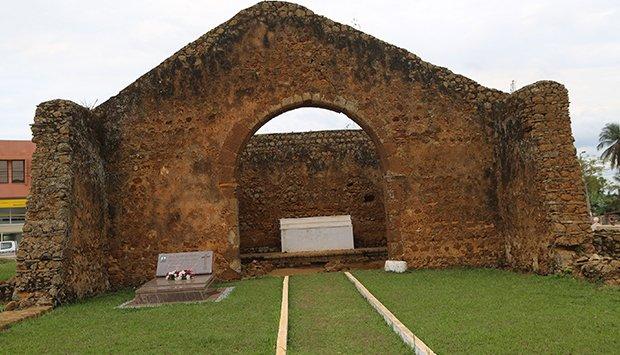Africa-Press – Angola. The ruins of Kulumbimbi, one of the landmarks in the Historic Center of Mbanza Kongo, need urgent intervention for better preservation, defended Biluka Nsakala Nsenga.
The head of the technical office of the Participatory Management Committee of the Historic Center of Mbanza Kongo added that the Kulumbimbi needs the attention of restoration specialists, to ensure the proper restoration and conservation of the monument, which helped to inscribe Mbanza Kongo as a World Heritage Site. by UNESCO.
“Kulumbimbi has certain fissures that concern the Angolan authorities, so we are working with the Ministry of Culture for a reputable and certified Spanish or Italian company to carry out the restoration. We still don’t have a specific date for the intervention work, because there are no specialists in the restoration of cultural assets in the country”, he lamented.
On the occasion of the celebrations of the 516th anniversary of the city of Mbanza Kongo and the 5th year since its elevation to World Heritage Site, whose central event took place on Friday, Biluka Nsakala Nsenga was invited to speak at a seminar, in which he took the opportunity to inform the population on the status of the World Heritage and the degree of compliance with UNESCO recommendations. “It’s a way of looking into the future and perhaps improving even more the conservation conditions of all the historical elements of the region”, he said.
The deputy director of the National Institute of Cultural Heritage, Emmanuel Caboco, who was also invited to the seminar, where he spoke about “The genesis of safeguarding the Heritage in Mbanza Kongo”, understands that issues related to the conservation and preservation of many of the national heritages they are quite delicate.
“Conserving and preserving involve large sums of money. Some intervention works require very delicate care. In the case of Kulumbimbi, only a restoration architect, who masters the construction techniques identified in the property, stone, lime mortar and the area, can carry out studies about the state of conservation”, he explained.
For Emmanuel Caboco, when a heritage goes to the UNESCO list, it must guarantee the assumptions of authenticity and integrity. “We have to guarantee the maintenance of aspects linked to the monument’s originality, with the material used in the construction. Therefore, the selected architect cannot deviate from or invert the importance from the material point of view, meaning or the value of the heritage, because it can lead it to lose historical importance. In most cases, these monuments document a period, from the point of view of construction technique, material used and other aspects that must be interpreted and studied”, he warned.
Historian João Pedro Lourenço, who spoke at the seminar on “Strategies and criteria for classifying Mbanza Kongo as a World Heritage Site”, considered it essential to raise some doubts about these criteria, as the ancient capital of the Kongo kings is a city originally African.
“Many of the sites used in the Mbanza Kongo inscription are related to Angolan tradition, such as the “sunguilo”. Of course, the city, like others, has incorporated elements from outside, but this does not detract from its originality. A concrete fact is the incorporation of the cathedral, which is related to Christianity, but without losing its African originality”, he clarified.
In the historian’s opinion, it is necessary to give value to a city that had the first Bishop of Black Africa, the first ambassador of sub-Saharan Africa to the Vatican. “We need to better clarify the country’s public opinion about the construction of Mbanza Kongo, explaining to young people that this site was built by Africans and the classification as a World Heritage Site was based on these criteria”, he defended.
For More News And Analysis About Angola Follow Africa-Press






